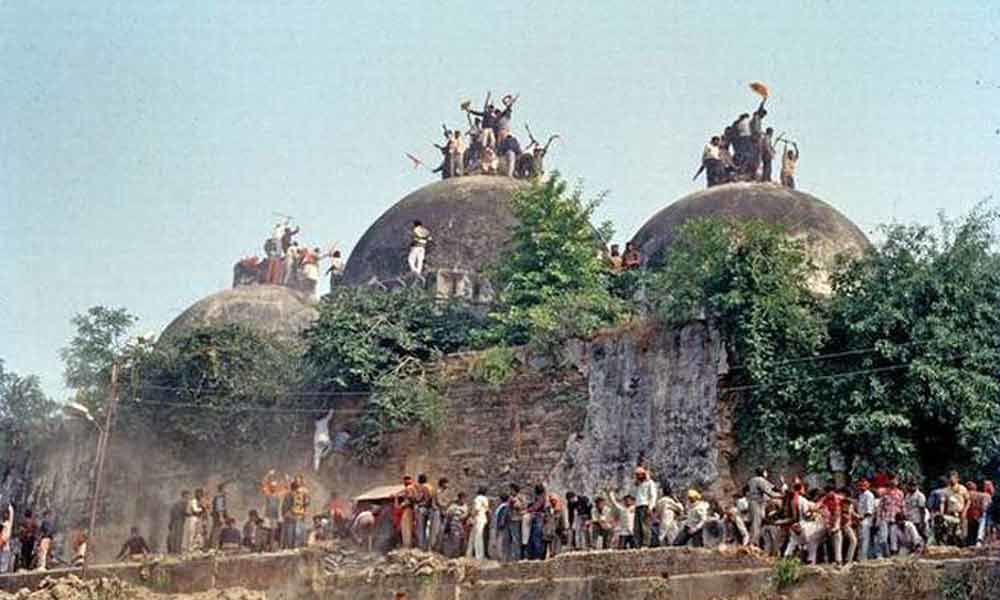Live
- Three persons admitted to hospital for diarrhea treatment
- First Star Outside Milky Way Captured: WOH G64 is 2,000 Times Larger Than the Sun
- Sikkim govt to constitute state Niti Ayog: CM Tamang
- CBI books Rajasthan narcotics inspector for Rs 3 lakh bribe
- Rajasthan bypolls: A tough contest between BJP and Congress
- Albania joins SEPA, paving way for EU integration
- Japanese government approves 250-billion USD economic package to ease price pain
- Six pharma companies to set up their units in Telangana
- The Unstable Events of a 17-Wicket Day in Perth: India vs Australia
- Dutch FM's Israel trip cancelled after Netanyahu's arrest warrant
Just In
Ayodhya case: Lawyers who captured court's attention


Four key players have emerged in the Ayodhya title dispute who presented a robust case and contested their point to the hilt to establish its validity before the Supreme Court in a nearly two month long hearing.
New Delhi: Four key players have emerged in the Ayodhya title dispute who presented a robust case and contested their point to the hilt to establish its validity before the Supreme Court in a nearly two month long hearing.
For Hindu parties - senior advocates K Parasaran and C S Vaidyanathan; and for Muslim parties - senior advocates Rajeev Dhavan and Meenakshi Arora put forth their case with unmatched finesse. The dispute, a case of highest political magnitude, has reached the last phase - the Muslim parties are in the penultimate shell of establishing their case followed by a rejoinder by Hindu parties - as arguments will wrap up on October 18.
The day-to-day hearing, which began on August 6, has been through distinct stages - from contextualizing Hindu faith and law; and sharp arguments from Muslim parties negating opposite law suits. A five-judge Constitution bench headed by Chief Justice Ranjan Gogoi is hearing the matter. The dispute started way back in 19th century and yet to reach a legal conclusion.
Despite its critical nature, the arguments, from both parties, never reached a point-of-no-return, where the judges will pass strictures. Parasaran, aged 92, who is learnt to be preparing for this case for a long time - presented a swift and comprehensive case on proving the essence of Hindu belief attached with Ram Lalla Virajman law suit followed by Vaidyanathan who built a strong case, bit-by-bit, on the relevance and validity of the Archaeological Survey of India (ASI) report.
The ASI report, which was commissioned by the Allahabad High Court, concluded that a structure bearing close resemblance to Hindu temple existed below the Babri Masjid. The Hindu parties seemed very settled on various point-of-laws especially presenting a legal dimension of the Hindu faith on Lord Ram. The lawyers were very open to queries from the judges and avoided repetitive or convoluted arguments in spite of the diversity and complexity intrinsic to Hindu faith.
For Sunni Waqf Board, Dhavan, aged 73, stood upright and argued vehemently for close to two weeks, in sharp contrast to other lawyers involved in the case.
His arguments were - jagged, comprehensive, and evoked most queries from the court. The Board, through Dhavan, during the arguments strategized to drive a wedge between the Hindu parties - Nirmohi Akhara, deity Ram Lalla through next friend, and the suit filed in 1950 by a worshipper Gopal Singh Visharad.
Dhavan drew court's attention on the emerging conflict between Hindu parties in connection with the management of the disputed site, if the apex court decides in their favour.
Dhavan was very skilful in conceding the Shebait rights to the Akhara and implied Ram Chabutra could have been the birthplace of Lord Ram.
In contrast, senior advocate Zafaryab Jilani accepted before the top court that Lord Ram was born on the Chabutra, but next morning retracted from his submission.
"He accidentally accepted it", contended senior advocate Meenakshi Arora, who argued for close to three days contesting the ASI report.
Arora's arguments evoked several queries from the bench, and in fact, she engaged all the judges in a debate on the validity of the ASI report.
She even questioned the authorship of the report, which Dhavan swiftly handled by retracting on this aspect of the argument; and also referred to it as conclusive though riddled with inconsistencies. Arora insisted on a probability of Islamic structure beneath the disputed site.
However, the apex court disagreed with the Muslim parties' dismissal of the ASI's excavation report. The report concluded that a Hindu structure resembling north Indian temples beneath the Babri Masjid in Ayodhya existed. Muslim parties referred this report as a piece of speculation having no evidentiary value.

© 2024 Hyderabad Media House Limited/The Hans India. All rights reserved. Powered by hocalwire.com






